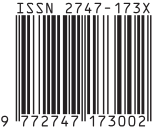Compressive Strength and Water Absorption Capacity on Brick Interlock with Fly Ash Addition
DOI:
https://doi.org/10.19184/cerimre.v7i1.44770Keywords:
Interlock Bricks, Fly Ash, Compressive Strength, Water AbsorptionAbstract
Interlock brick is an environmentally friendly substitute for house wall materials because the manufacturing process is not burned like red brick. This method of installing interlocking walls, like Lego, can function as a structure for sluice gates, columns and ring beams without the need for plastering or painting, so it is more effective and efficient and can reduce cement consumption. Several actions must be taken to minimize the use of cement by using environmentally friendly materials. One of the environmentally friendly materials that will be researched is Interlock bricks made from a mixture of Fly Ash . This research aims to determine the compressive strength and water absorption capacity of Interlock bricks mixed with Fly Ash. The research method begins by looking for interlock brick parameter data in the form of compressive strength and water absorption capacity. Compressive strength is a parameter of the mechanical suitability of interlock bricks , while water absorption is the ability of a material to absorb water. There are 3 variations of the mixture, namely with the ratio Fly Ash : Sand: Cement, mixture I (3: 3: 1) Fly Ash 43% , mixture II (4 : 3 : 1) Fly Ash 50% , and mixture III (5 : 3 : 1) Fly Ash 56% calculation divided based on the percentage of the amount of Fly Ash , obtained the compressive strength value of Interlock brick from the Fly Ash mixture in mixture I 16.0 kg/m2 and water absorption capacity 20%, mixture II 24.7 kg/m 2 and strength water absorption 17.5%, mixture III 10.3 kg/m 2 and water absorption 21.8%. According to SK-SNI-S-04-1989-F Interlock brick mix II with a Fly Ash composition of 50% is close to class K25 (25 kg/m 2 ) and has an absorption capacity value of <20.0% according to the absorption capacity limit based on SNI 15- 2094-2000.
Keywords: Interlock Bricks, Fly Ash, Compressive Strength, Water Absorption.








